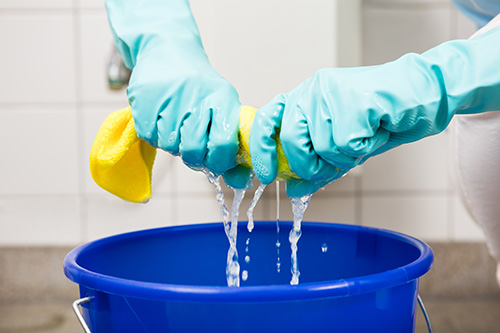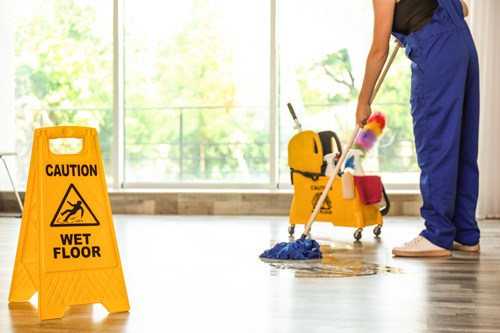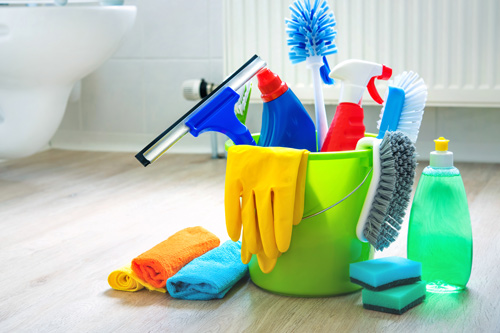One of the easiest ways to spread germs is through cross-contamination. Cross-contamination is the act of transporting germs and bacteria from one place in a facility to another and can be done unintentionally during cleaning. By taking the proper precautions, you can keep your facility germ-free. Here are four ways to prevent cross-contamination.

1. Use new cloths for each step of cleaning
Never double dip the same mop or cloth into a bucket of cleaning solution to rinse and reuse. This makes it easier to cross-contaminate. The moment a mop head or cleaning cloth touches a surface, it’s contaminated. When you put it back in the cleaning solution, you contaminate the solution and the next surface that gets touched. This can be avoided by training cleaning staff on best practices, such as folding cleaning cloths into quadrants and wiping in one direction instead of back and forth.

2. Clean from top to bottom
Cleaning crews should clean from top to bottom so dust and dirt that isn’t captured in the cleaning tool falls to the floor and is picked up during the final step of the cleaning process. Cross-contamination often begins at high-touch areas, such as doorknobs, counters, and railings but floors are another source for germs and bacteria. Even if your hands don’t directly touch the floor as often as they touch a doorknob or other high-touch area, you will likely pick up items that have been on the floor. The best way to prevent cross-contamination is to clean in this order:
- Wipe down surfaces first
- Disinfect second
- Tackle the floor last

3. Train workers on PPE protocol
Cross-contamination can be easily prevented by regularly washing hands. Frontline workers should use extra protection in the form of gloves and masks and all workers should be trained on how to correctly put on and remove personal protective equipment (PPE). This is called 'donning' and 'doffing' and when done incorrectly, workers may accidentally contaminate their hands, spreading germs and bacteria around.

4. Color code cleaning tools
Creating a color-coding system for cleaning tools makes it less likely to cross-contaminate. It's as easy as separating tools by task and color. Most systems use hotter colors for the higher risk areas. This means red cloths, mops and chemicals are used on toilets, urinals, and restroom floors. Yellow options are for restroom sinks and mirrors. Green tools are for food service areas and blue labeled products are for general, low risk areas.
AP&T can help you find the right solutions for the janitorial products and janitorial equipment your facility needs. If your staff needs training, we offer free training for your employees.
When you need to prevent cross-contamination, it’s twine time.
|
Fill out my online form.
|
